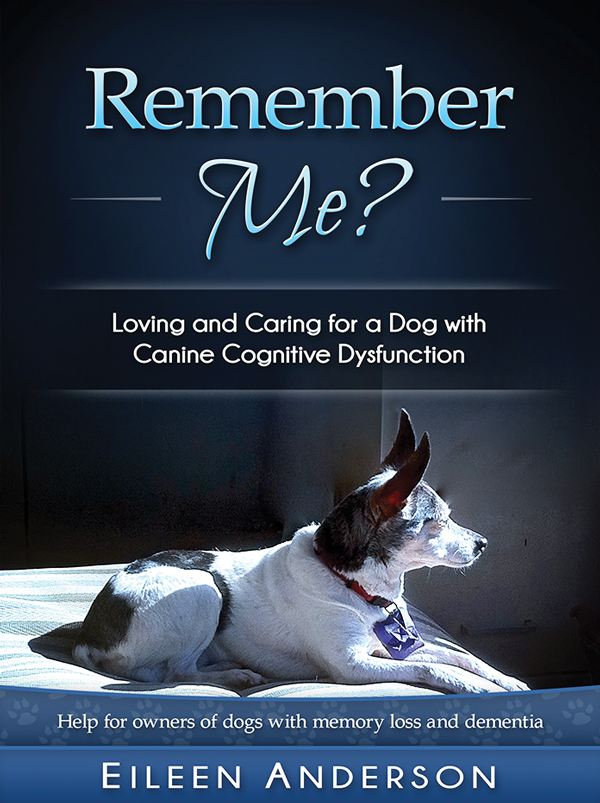Eileen Anderson is an Arkansas-based author who also maintains the Dog Dementia website, a resource for people whose dogs have been diagnosed with CCD or are displaying symptoms of the disease. Anderson’s book Remember Me?: Loving and Caring for a Dog with Canine Cognitive Dysfunction, not only chronicles her experience caring for her dog, Cricket, who was diagnosed with CCD in 2011 at the age of 15, but also helps guide other dog owners through what they need to know to best care for their dogs with CCD.
“It breaks my heart that the vast majority of people who find my site have dogs who are in late stages,” Anderson says. “These owners are usually already grappling with the oncoming choices about euthanasia. I hope that more people can learn about CCD and begin to see the signs much earlier so they can take steps to slow the process.”
Anderson has developed a printable checklist that includes an extensive list of CCD symptoms, designed to help dog owners recognize the signs and then keep records of behaviors their dog may exhibit, so they can remember to bring up these with their veterinarians. The checklist includes varied symptoms to watch for, including not responding to her name, seeking less attention, getting trapped under furniture, and being frightened of once-familiar people.
Anderson also encourages people to keep in mind that while CCD is very upsetting for dog owners to grapple with, it isn’t always as traumatic for our dogs. “We remember the dog’s former vibrancy,” she says. “But if we take a good look, dogs who pace may not be distressed. They don’t remember what they have lost. And if dogs still have pleasures in life, and guardians who are attentive and who can help provide those, they still may have good months or years ahead of them.”
Keeping dogs with CCD comfortable is key. Anderson has become an expert in strategies for supporting aging dogs and ensuring their homes are safe. She has found that putting bathmats and yoga mats on floors can help dogs who are unsteady or disoriented. She also encourages people to put dog beds, food dishes, and water bowls in a number of locations in the house, so that disoriented dogs can find them while wandering. “I put water stations in corners because Cricket ended up in corners a lot,” Anderson says. She also advises that owners of dogs with CCD monitor and/or remove mobility ramps as well as access to stairs because the dogs may no longer have the cognitive ability to safely navigate them.
Enrichment is key for all dogs, but especially dogs with CCD. Anderson offers the important perspective that even if activity doesn’t slow the progression of CCD for a particular dog, keeping these dogs mentally and physically active will help keep their overall quality of life as high as possible.
Remember Me? won the 2016 Maxwell Award from the Dog Writers Association of America for a book on health, behavior, or general care.
Related Posts
Canine Dementia
Nutritional Help for CCD







I bought your “Do You Remember Me?” on Amazon and am not able to download the printable symptom list from the link given. Is that available somewhere else?